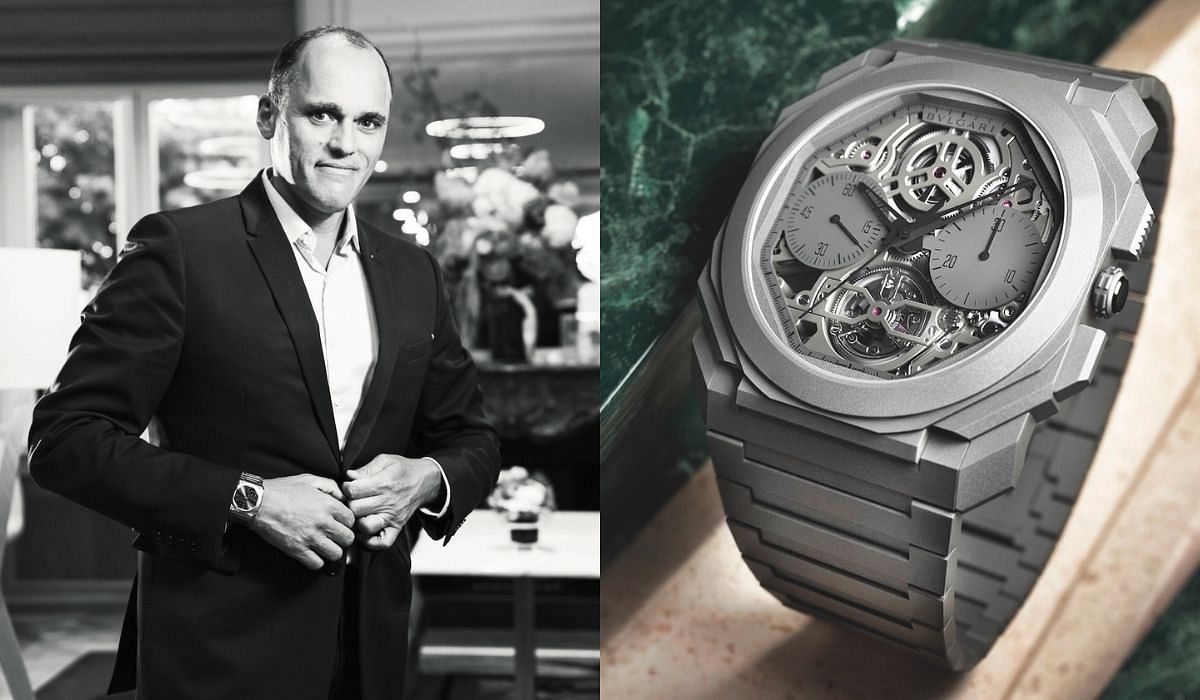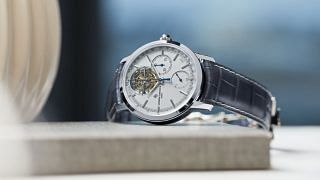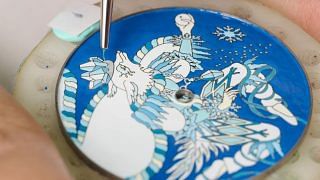With videoconferencing becoming a widespread norm this year, it’s no surprise that the quality of people’s Zoom set-ups varies greatly. The folks at Bvlgari have certainly got theirs right. During an interview with Antoine Pin of Bvlgari’s watch division, we duly note that the managing director is seated at a desk at just the right distance from what must be perfectly placed cameras – no chin-enlarging, too-low laptop webcams here.
Also, the timepieces he holds up to the camera immediately come into focus – quite unlike the fuzzy close-ups so common in presentations by horology brands. Marking exactly one year into his role as the head of Bvlgari Watches on the day of our interview, Pin says with a smile, “We’re getting better by the day at managing the concept of phygital. What we have learnt from the Covid-19 crisis is the importance of flexibility and having the capacity to adapt and adjust, while staying cautious.” Planning for the Geneva Watch Days fair in August was a major learning experience, even for the watch and jewellery veteran of more than 20 years.
He recalls, “The Swiss government’s guidelines on travel changed every week, so we had to adjust our plans by the week. In July, we realised that the crisis would not improve by the summer, so we adjusted our programme and set up a Zoom studio, turning the physical event into a phygital one. This continuing need to adapt has been a somewhat difficult, yet intellectually exciting exercise.”
Antoine Pin, managing director of Bvlgari’s watch division.
A closer look at the Bvlgari Octo Finissimo Tourbillon Chronograph Skeleton Automatic.
LOOKING FURTHER
Beyond Covid-19, Pin has a longer-term challenge: getting a wider audience to regard Bvlgari Watches as a serious watchmaker rather than a jewellery brand that makes watches. It’s a common challenge faced by brands with a strong heritage in other product segments, even though Bvlgari, which most recently inaugurated its expanded case, bracelet and dial facility in Saignelegier, is very much a vertically integrated Swiss watch manufacture.
The movement facility is located in Le Sentier while its watches are assembled at its headquarters in Neuchatel. This integration was greatly helped by its acquisition of the Gerald Genta and Daniel Roth brands in 2000. Pin, who also spent time at Tag Heuer and Zenith, notes candidly, “Very few people know that we have been making watches for more than 100 years… a much longer time than some so-called traditional watchmakers today.
We have been producing our cases, dials and movements for more than 25 years, and we integrate 25 different metiers (skills) in watchmaking. But that often doesn’t emerge, not because we don’t say it, but because people have difficulty hearing it. There tends to be a bias and disbelief that one can move out of one’s original field and be multitalented.
“It’s also because the watch industry moves at a slow pace. We may be extremely active but the reception of the message takes time. Why? People generally don’t buy watches often. They might buy a new watch every four or five years. When they want to buy a watch, they deep-dive into the category and then they move out of it. So, it takes a lot of time to change people’s mindsets in this industry.”
“Very few people know that we have been making watches for more than 100 years.”
REINFORCING THE MESSAGE
One way in which Pin aims to bring about this mindset change is through his brand’s offerings. This year, for instance, the latest addition to Bvlgari’s angular Octo Finissimo range again broke a world record for thinness – the collection’s sixth for ultra-thin timepieces since 2014. With a height of just 7.4mm, the Octo Finissimo Tourbillon Chronograph Skeleton Automatic is the world’s thinnest tourbillon chronograph watch.
Earlier this year, Bvlgari introduced the world’s smallest tourbillon movement with the Serpenti Seduttori Tourbillon jewellery watch. Says Pin, “These records help us to hammer home our message. To reinforce our legitimacy as a watchmaker, the best solution is to repeat, repeat, repeat. We are building our reputation progressively, year after year, through our contributions to Swiss watchmaking.
That of super-miniaturised movements, which also reflect the elegance of our Italian design roots.” In another interesting move, the Gerald Genta name has returned to the spotlight. Pin explains, “We had to keep the name silent for some time to develop our own identity and culture, and we now feel strong enough to once again celebrate the heritage of Gerald Genta.”
This year saw the launch of the Gerald Genta Arena Bi-Retrograde Sport, a 43mm titanium model featuring the jumping hours, retrograde minutes and retrograde date display that are a signature of the famed late watch designer’s eponymous brand. It follows the release of the platinum Bi-Retro model last year to mark Gerald Genta’s 50th anniversary.
The company has big plans for this name. “We plan to celebrate his heritage with future collections with stronger input from the Gerald Genta fan community,” says Pin. It’s a shrewd move, especially considering that the burgeoning craze for luxury steel sports watches has brought about renewed interest in the designer, whose impressive body of work includes the Audemars Piguet Royal Oak and the Patek Philippe Nautilus. As for Daniel Roth, that other great watchmaking name that Bvlgari owns and has successfully incorporated into its fold? Without missing a beat, Pin replies, “It’s a slow-paced industry. We need to take things one step at a time, so we can build them solidly.”
Related:
Watch spread: Perpetual calendars
Omega launches the Speedmaster “Silver Snoopy Award” 50th Anniversary
Rimowa’s aluminium watch case is made for the style-conscious horology enthusiast








